The Transylvanian villages with their fortified churches provide a vivid picture of the cultural landscape of southern Transylvania. According to the eminent botanist and conservationist dr. John Akeroyd, this region represents “the very last example of an untouched medieval landscape in Europe.”
The story began with the settling of the German speaking population in Transylvania in the 12th – 13th century, coming from the Rhine and Moselle rivers area, at the initiative of the Magyar kings. The first documents about them refer to „Flandrenses”, „Saxones” and “Teutons”. They were given special privileges (1242) and founded an autonomous territorial-administrative entity called the Universitas Saxonum, with its political, administrative and religious center at Sibiu (Hermannstadt).
For 800 years since then, they developed and guarded the Germanic tradition, developing a specific land-use system, settlement pattern and organization of the family farmstead that have been preserved since the late Middle Ages.
Unfortunately, in the 20th century no less than 90% of them packed its bags and committed eight centuries of history to memory, the most astonishing, and little reported, ethnic migration in modern Europe. They left behind hundreds of square miles of rolling beech woods, bears, lush pastures and wild flowers, once home to the Dracula legend. Across it are dotted medieval grid-planned villages, with Lutheran churches, schools, dignified houses, barns and smallholdings, their customs and exclusivity reminiscent of the Pennsylvania Dutch.
The Transylvanian Saxons ranked with the Mennonite Amish, the Patagonia Welsh and the Volga Germans among the dislocated tribes of Europe. They lasted a phenomenal eight centuries, leaving intact monuments of a culture distinct and yet integral to European history.
The list of fortified churches in endless – besides the more than 120 Saxon fortified churches there are also 23 Székely (ethnic Hungarian) fortified churches to explore in Transylvania. Among them 7 churches have been declared UNESCO World Heritage Sites.
Departures: All year
Duration: 4 days / 3 nights
PRIVATE TOUR: by car / minivan
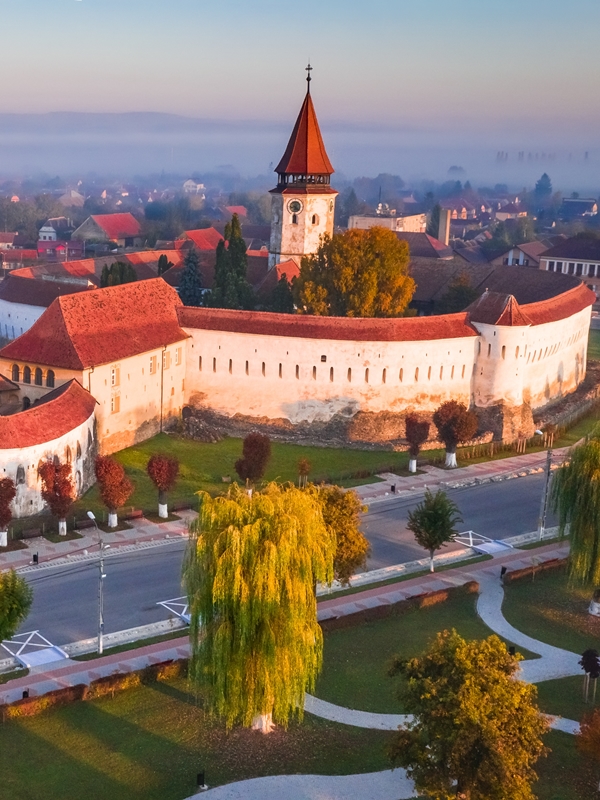
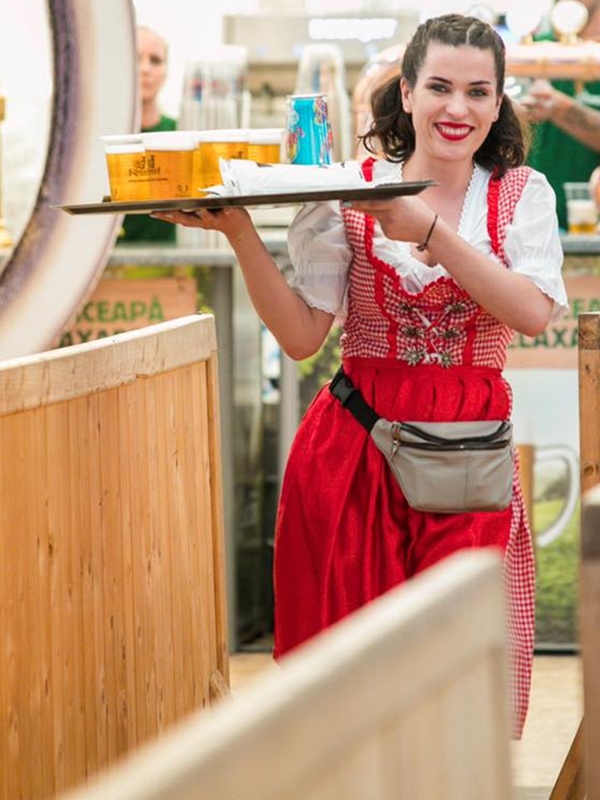
We’re leaving Bucharest and cross the Romanian Carpathians towards the North. The mysterious Transylvania is waiting for us.
Across the mountains we reach the first UNESCO attraction of the program, Prejmer Fortified Church.
What makes the church unique is its layout, originally a Greek cross bordered on the north and south by secondary areas; the layout was then changed to a Latin cross shape in the 16th century. In the mid-15th century, the church was enclosed in a roughly circular fortification wall, with a tower gate on the south and overlooked by four semicircular towers, making it the strongest of the Saxon fortifications in Transylvania. During sieges, people would leave the village and gather in the fortress, in 270 rooms, where they needed supplies to ensure survival over extended periods. This is why, apart from the storage rooms and the living quarters, the fortress also included wells, a mill, a bread oven and even a school. Today it is one of the best-preserved citadel-churches in Transylvania.
Visit the church and drive to Brasov city.
The city was built by the Saxons starting to 1234 in SE of Transylvania, along one of the oldest trade routes between Wallachia, Moldavia, and Transylvania; this splendid city is full of history, mystery, and traditions. Walking on Brasov’s streets means walking through history: every step takes represent a discover of a very well-preserved remains since the ancient times.
The Old Centre with the Black Church (1383 – the most representative ecclesiastical building of the Saxons from Transylvania), the Council Square – the heart of the city, the southern fortifications with bastions, the outer walls defensive system, the cobbled stone narrow streets bordered by medieval Saxons households, all of these will drive you back in history, in the times of the knights and princesses.
Accommodation near the Brasov Council Square.
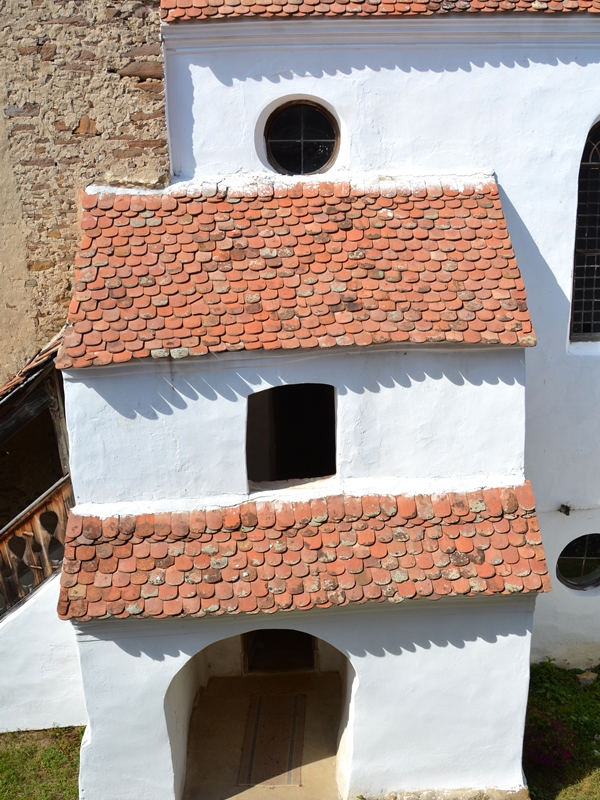
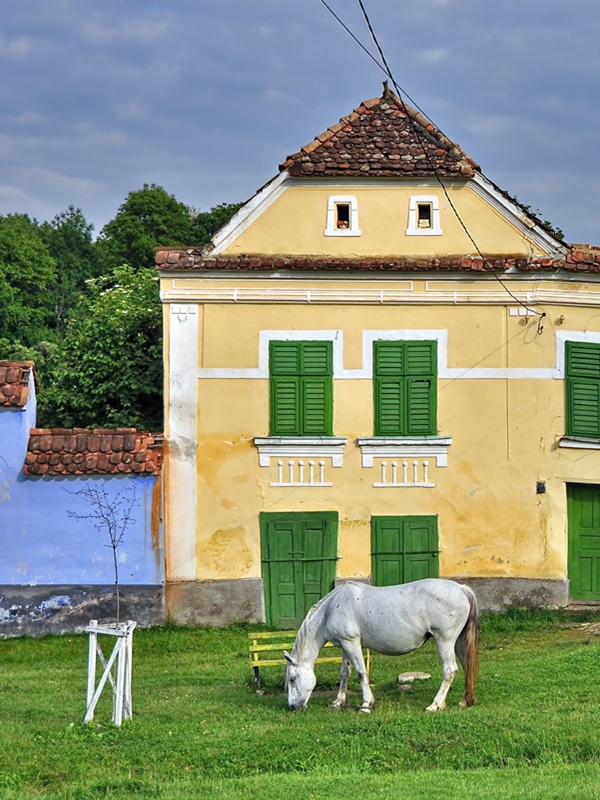
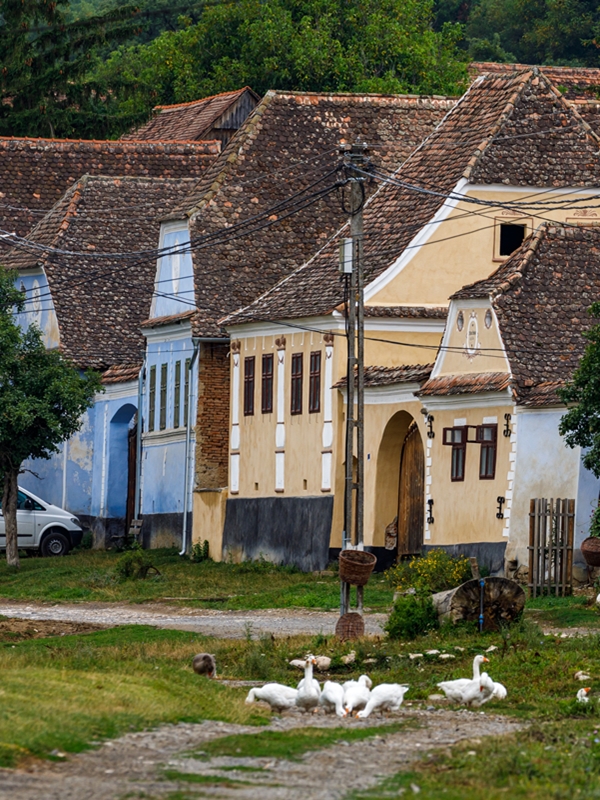
Today we have the chance to find out traditional medieval history.
In spite of the deep changes that have occurred during the past century -the long presence of the Saxon community is still evident in the village; this rural community retains a valuable architectural heritage that includes an impressive Lutheran fortified church, mainly built in Romanesque and Gothic style, and a predominantly traditional rural settlement consisting of colorful farmhouses of medieval foundation and Baroque appearance.
Viscri is best known for its highly fortified church, UNESCO listed, originally built around 1100 AD by the Szeklers.
We take the opportunity to lunch in such a place, Viscri 125 - seasonal ingredients from local farmers come alive in age old recipes prepared with care; beside the barn-restaurant there is a beautiful orchard where we can relax while enjoying some authentic or slightly reimagined Transylvanian recipes.
Leave Viscri in the afternoon and head to Sighisoara. The city is an outstanding testimony to the culture of the Transylvanian Saxons, that continue to exist due to its architectural and urban monuments. Still inhabited nowadays, the historic center of Sighisoara is the most representative mediaeval urban site of Transylvania, UNESCO listed in 1999 – it has preserved almost intact the city organization (street network, plot system) as well as the architectural worth of its constructions. Due to the slow economic development of the city over the years there is a high density of the monuments of architecture: the public buildings, the dwellings that make up the assemblage, as well as the fortifications conserved in a proportion of 90%, give to the area the aspect of a crystallized unique site of historic worth.
There’re plenty of reasons to visit the city: two gothic churches who preserved the original form, defensive towers (each with a different design), small cobbled narrow streets, the craftsmen’s houses that have preserved the planimetrically design, the original material and the initial structure.
After a walking tour of this amazing citadel, accommodation in a charming 3* hotel, an old Saxon dwelling.
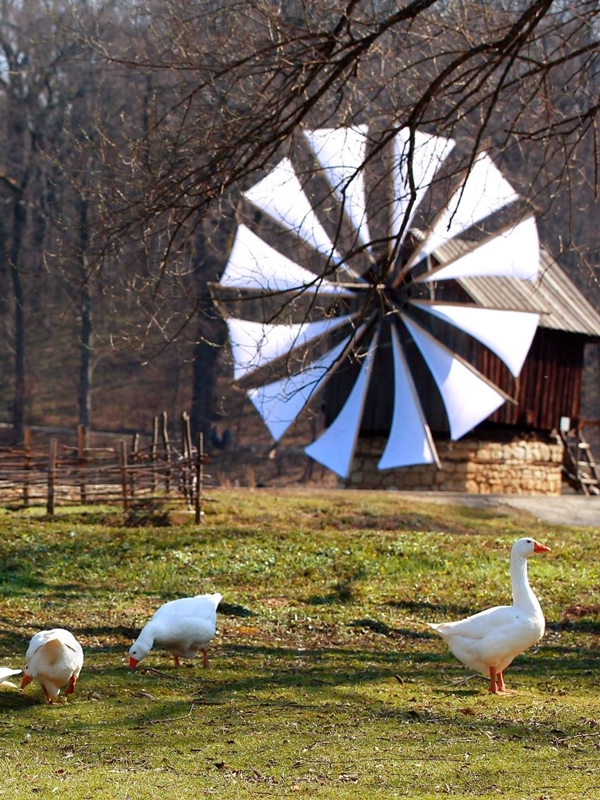
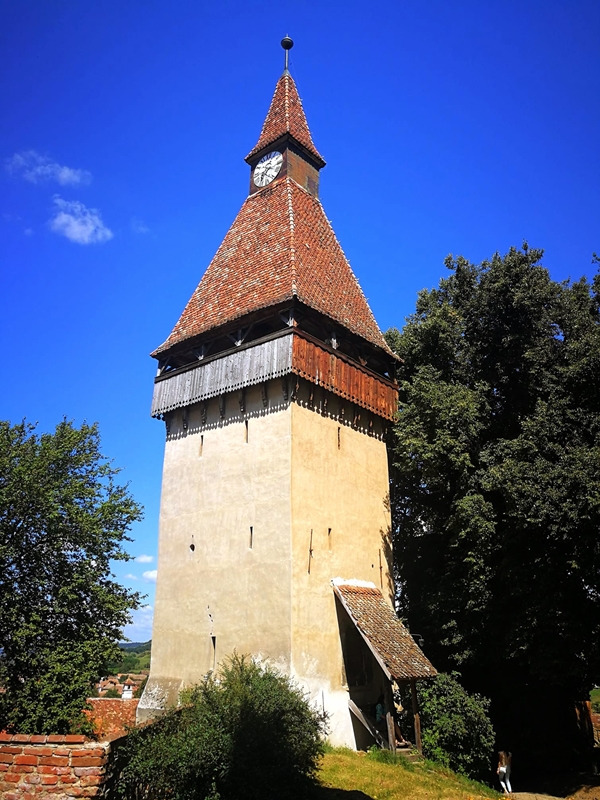
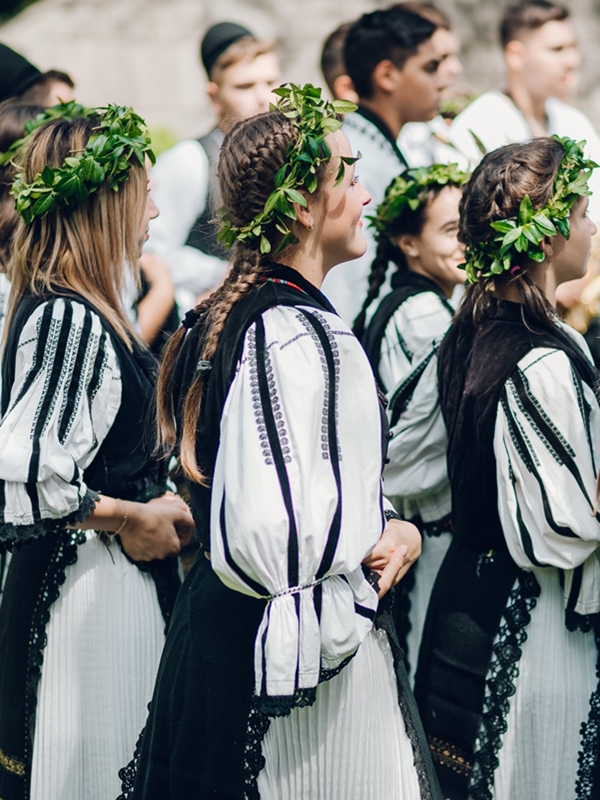
The journey into the medieval Transylvania continues. Quaint villages lined with brightly painted stucco houses with rust-colored tile roofs, fortified churches and watchtowers, an architecture at once Classic and Romantic. Furrowed fields in a patchwork, horse-drawn carts, forests brimming with wolves and bears and a sense that we left behind the 21st century - this is the rural Transylvania.
Another UNESCO ecclesiastic establishment worth a visit: Biertan Fortified Church.
Founded during the 15th – 16th centuries, the church features a Late Gothic predominant architectural style with Romanesque elements. Submitted to UNESCO as early as 1993, its importance resides mainly from the fact that it was the see of the Transylvanian Lutheran Church for roughly three centuries. The church was built in the middle of the village and dominates the landscape of the surrounding area. It has three fortification walls, linked by gate towers, eight towers and the church itself was equipped from the very beginning with solid defensive elements.
Arriving at Sibiu in the afternoon. Our interest here is the Historic Centre and its Ensemble of Squares, added on the UNESCO Tentative list in 2004.
This place displays an extensive stock of Gothic, Renaissance, and Baroque architecture, as well as examples of late 19th to early 20th century date (the Interwar period). The evolution of the city from its initial strategic stronghold protecting a rural settlement to a mercantile and artisan center and powerful regional capital city is expressed in the important collection of vernacular buildings, to be seen especially in the lower town. Our sights are enchanted by beautiful old architecture of the residential, ecclesiastic or military constructions from the Old Center. We mention a large variety of churches, the historical buildings that are bordering the squares of the center (the Large, Small and Huet Squares), the ensemble of fortifications with 3 belts and defensive towers (the Fat tower, the Stairs tower, others being named upon the guilds - The Potters, Goldmkers, Carpenters).
Accommodation at a centrally located place – a beautiful blend that offers charm and intimacy, comfort and hospitality.
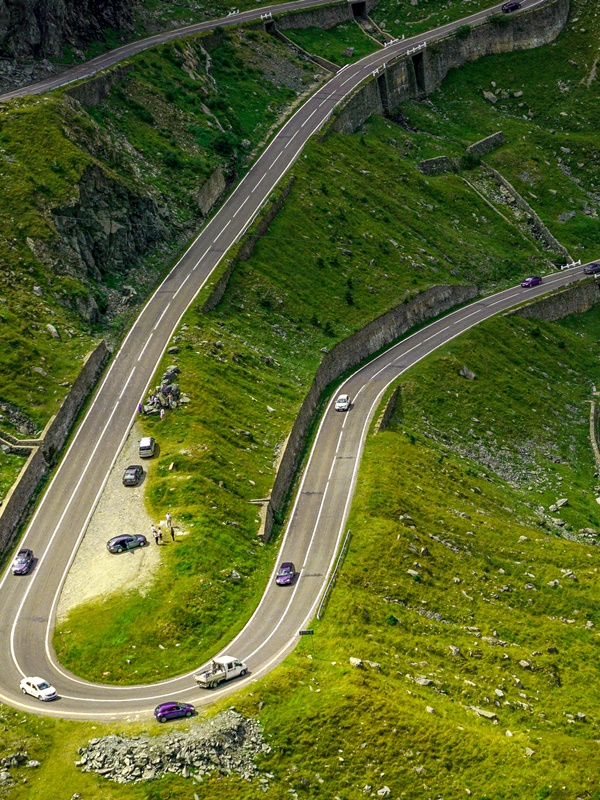
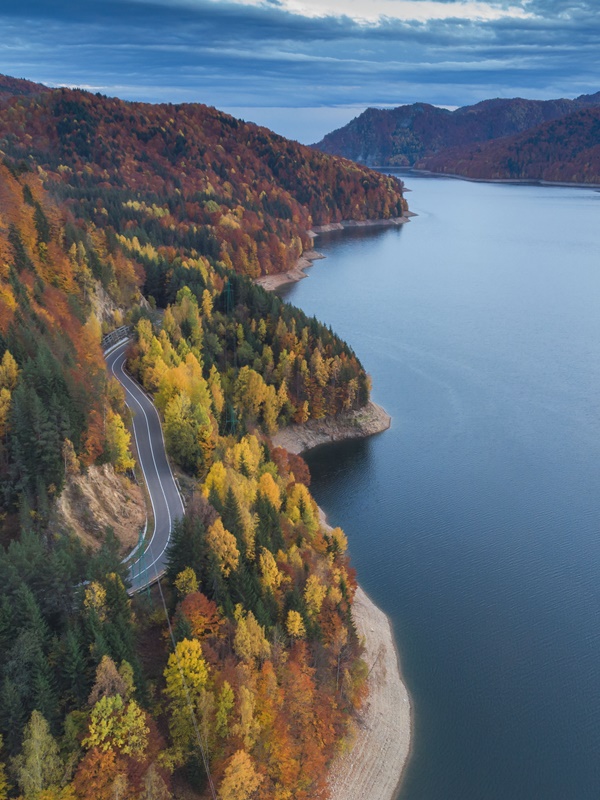
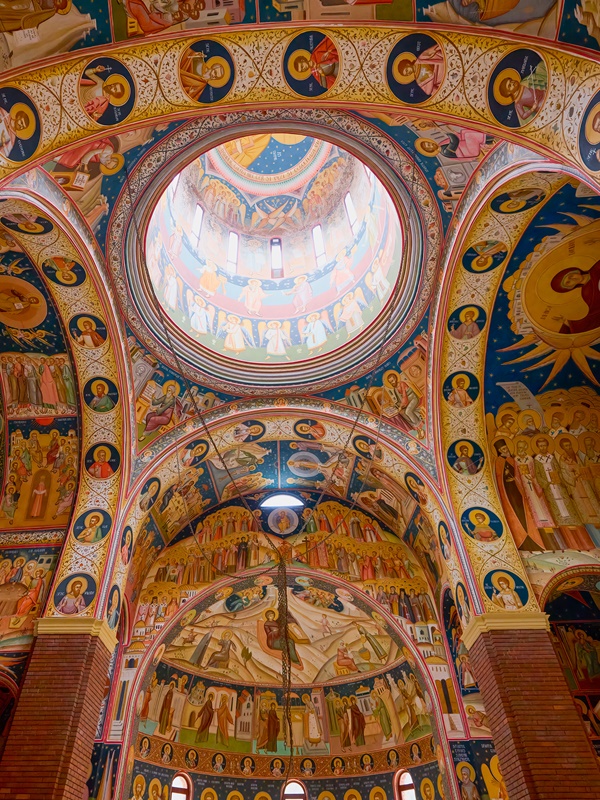
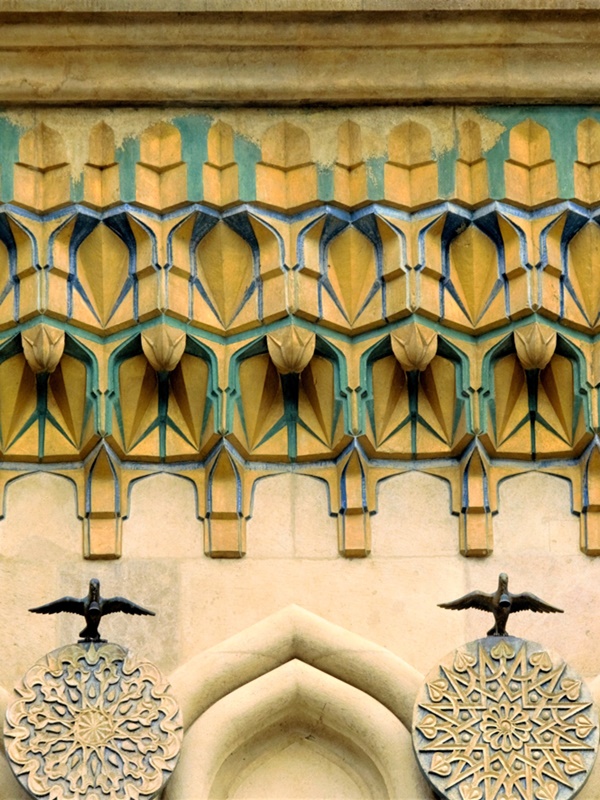
We’re leaving Transylvania and head South over the Carpathian Mountains, driving the most scenic and spectacular mountain road in Romania, the Transfagarasan*.
**when the weather conditions do not permit it and the road is closed, we will change our route to Olt River Valley and visit Cozia Monastery instead.
Getting to Wallachia we stop at Curtea de Arges. The ruins and ecclesiastic buildings from the town of Curtea de Arges, the ancient capital of Wallachia have been included in the UNECSO Tentative List in 1991.
A first set of important constructions is made up of the ruins of the Princely Court and the princely church of Saint-Nicolas, built in 1340-1376 as a "Greek cross" and preserving almost entirely the original painting, whose artistic qualities place it among the most important examples of 14th century painting. The set is completed by the ruins of the church of "Saint Nicoara".
The second objective, the church of the former monastery of Arges, decorated in richly carved stone, has a triconch plan with four domes, and an enlarged narthex, serving at the same time as a princely necropolis (for the founder – St. Neagoe Basarab and other heads of Wallachia, as well as for the Royal Family of Romania). The monument constitutes an architectural archetype for a series of monastic constructions, representative princely foundations, until the 18th century.
Return to Bucharest in the afternoon.
From 790 EUR/pers
*contact us for a personalized quotation
- Professional guide assistance, English speaking (or other languages upon request), during the whole trip;
- Transport by private modern AC car/mini-van (fuel and parking fees incl);
- Airport pick-up/drop-off (if the tour starts and ends at the airport - upon request);
- Accomodation for 3 nights in centrally located 3* hotels with breakfast;
- City tour in each city in the trip;
- Lunch in Viscri village.
- Entrance fees to the touristic attractions included in the itinerary;
- Meals, other than those mentioned in the itinerary;
- Other expenses (such as souvenirs, room service, tips and so on)
- Photography fee

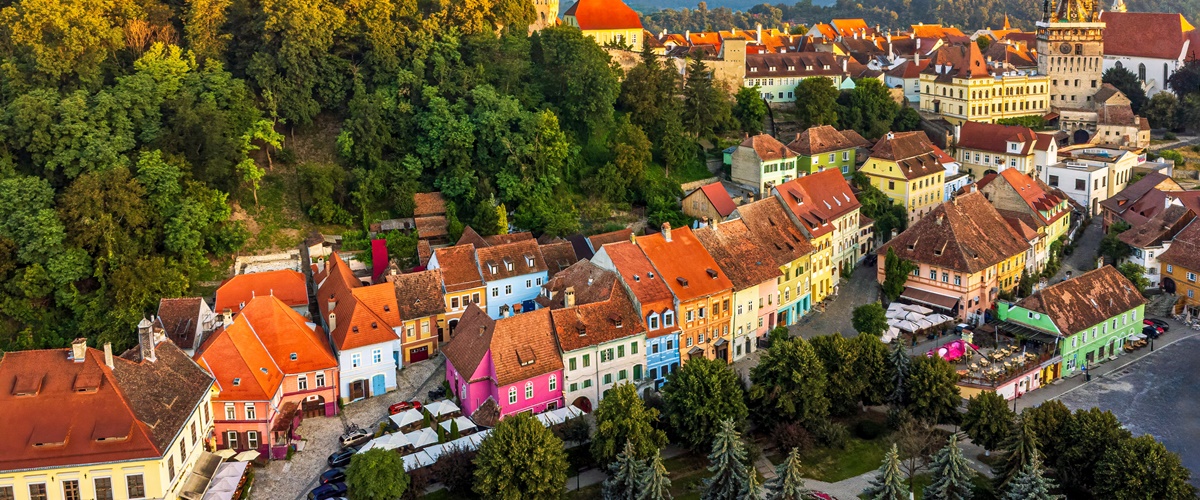



.png)




